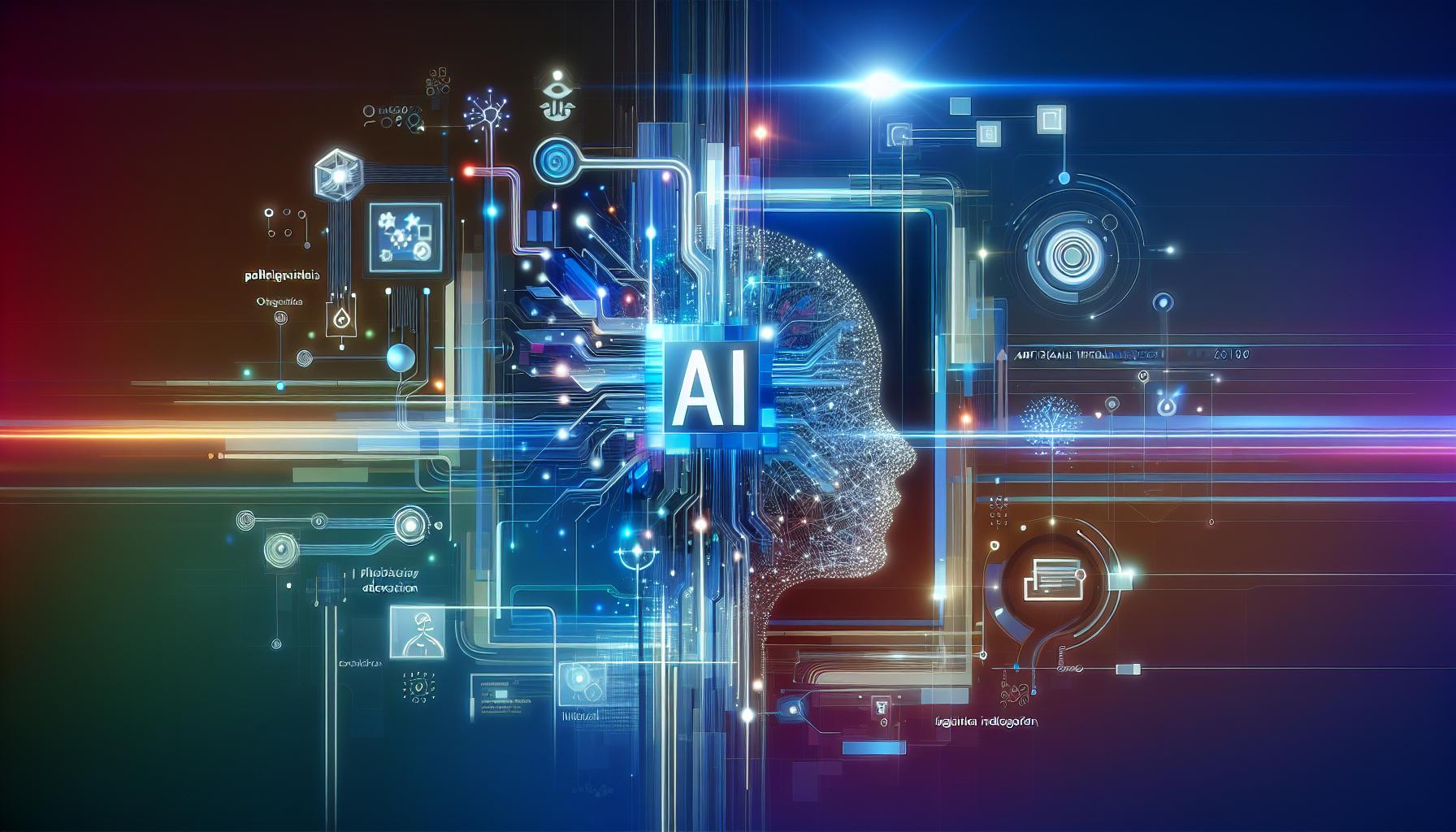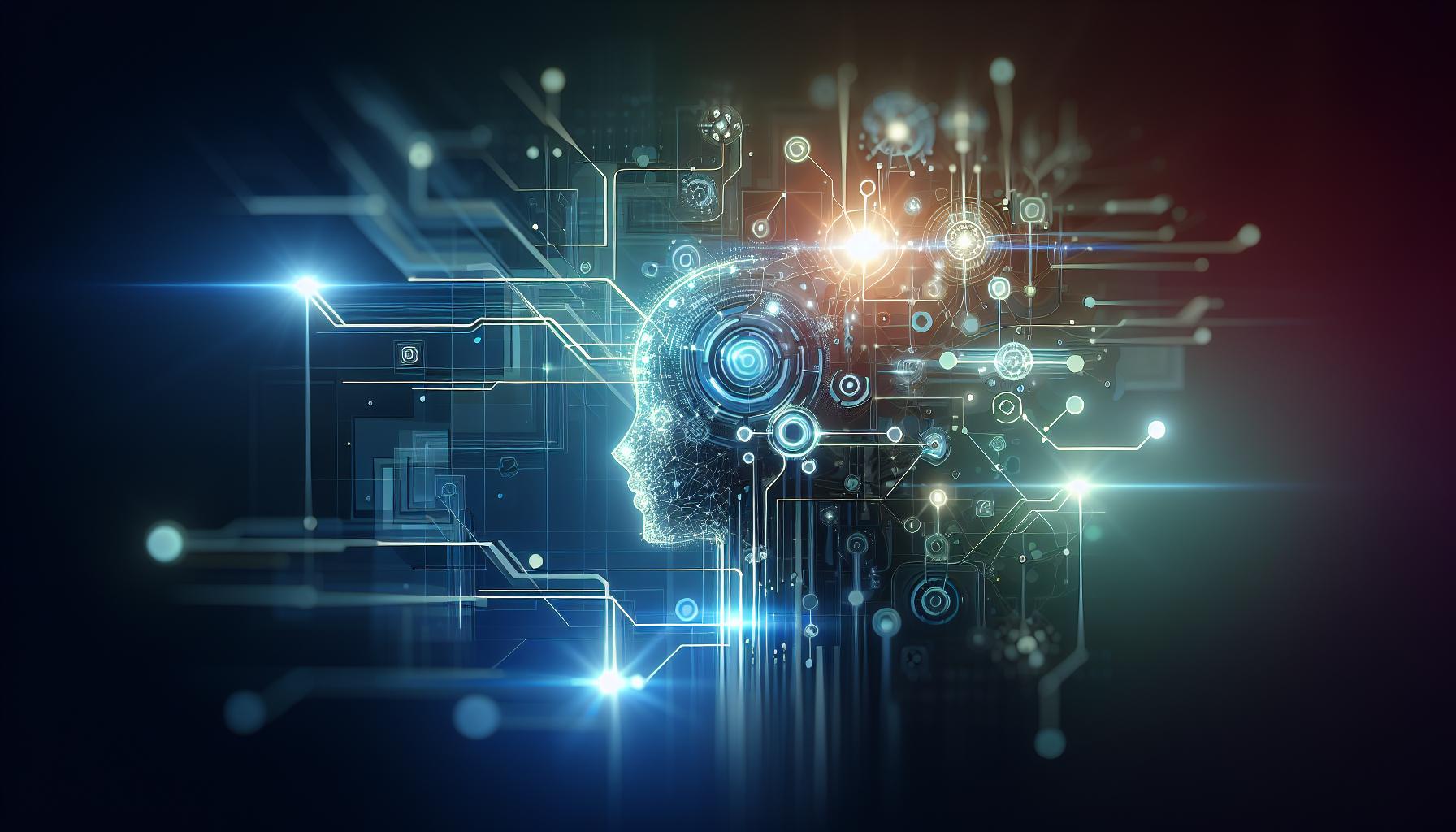As artificial intelligence tools become increasingly sophisticated, many students wonder: how can colleges detect AI-generated work? Understanding the detection methods used by academic institutions is crucial, not only for maintaining academic integrity but also for ensuring fair evaluations. This article explores the techniques colleges employ to identify AI plagiarism and uphold standards in education.
Understanding AI in Academic Work: Why It Matters
In today’s academic landscape, the integration of artificial intelligence (AI) tools has revolutionized the way students engage with their studies. Approximately 30% of college students have admitted to using AI in their academic work, highlighting a pivotal shift in educational methodologies. Understanding how colleges monitor AI usage is crucial not only for upholding academic integrity but also for fostering a deeper exploration of AI’s role in learning and scholarship.
The Importance of Recognizing AI’s Role in Academia
AI can serve as a powerful ally in academia, assisting students with research, writing, and comprehension tasks. However, this reliance on technology raises significant ethical concerns. Institutions must grapple with the challenge of distinguishing between legitimate academic support and unfair advantages gained through undue reliance on AI. Some detection methods colleges employ include:
- Plagiarism detectors: These tools can identify text that closely mirrors existing content, making it easier for institutions to pinpoint AI-generated writing.
- Behavioral analysis software: By examining patterns in students’ submissions and their engagement with coursework, colleges can detect anomalies that may suggest AI interference.
- AI detection tools: New technologies specifically designed to recognize AI-generated text are evolving rapidly, adding an extra layer of scrutiny in academic environments.
Despite the challenges posed by AI in academia, understanding its implications encourages a dialogue about how to harness its power ethically. Institutions are beginning to incorporate AI literacy into their curricula, teaching students to responsibly leverage technology for their academic growth. Real-world examples, such as universities offering workshops on effective AI tool usage, demonstrate a proactive approach to navigating this transformative landscape.
A Call for Responsible AI Use in Academic Settings
Students are advised to use AI as a complementary tool rather than a crutch. This includes strategies such as:
- Utilizing AI for brainstorming and outlining: Before diving into writing, students can use AI to generate ideas and organize their thoughts, but the actual writing should be in their own words.
- Fact-checking and research assistance: AI can help in locating sources and verifying facts, but students should engage critically with the information it provides.
- Learning aid: Instead of relying on AI for direct answers, students can utilize it for explanations, fostering a better understanding of complex topics.
By fostering a balanced approach, students can enhance their learning experiences while minimizing the risk of repercussions from AI misuse. Understanding the methods colleges employ to detect AI usage is not merely about avoiding penalties; it is about embracing a future where technology complements education in an ethical and responsible manner.
Key Signs That AI Tools Have Been Used in Assignments

In the evolving landscape of academia, the integration of AI tools in student assignments has sparked vigorous discussions about originality and authenticity. As these technologies become increasingly accessible, educators are sharpening their focus on identifying potential signs of AI-generated content. Recognizing these indicators can empower both students and faculty to engage in more meaningful conversations about integrity and creativity in learning.
Proficient Linguistic Uniformity
One of the most prominent indicators of AI usage in writing is an unusually consistent level of linguistic sophistication throughout the piece. Human writing often exhibits variability, with differences in tone, style, and vocabulary depending on the subject matter and individual voice. In contrast, AI-generated text tends to maintain a uniform style and language pattern, potentially leading to a lack of personal touch. Educators attuned to this consistent linguistic presentation may question the authorship of such assignments.
Inconsistent Argument Depth
Another telltale sign lies in the depth and development of arguments. AI often produces content that superficially covers numerous points without delving deeply into any single aspect. This can manifest as:
- Shallow analysis that lacks critical thinking.
- Generalizations that don’t explore specific examples or counterarguments.
- A failure to connect ideas cohesively, creating disjointed paragraphs.
These characteristics may prompt instructors to scrutinize the work more closely, especially if a student’s previous submissions showcased nuanced insights.
Over-Reliance on Common Knowledge
AI tools frequently lean on widely accepted information or clichés, which can skew the originality of content. Assignments saturated with commonplace phrases, generic conclusions, and a lack of unique perspectives may suggest reliance on AI for composition. When instructors notice this trend, they might engage students in discussions to gauge their understanding of the subject matter. A deeper inquiry into the assignment may reveal discrepancies in a student’s grasp of the material compared to what is presented.
| Signs of AI Usage | Potential Implications |
|---|---|
| Consistent vocabulary and tone | Lack of personal voice |
| Shallow arguments without depth | Limited critical analysis |
| Overly simplistic ideas | Dependence on AI for content generation |
Being aware of these signs is crucial not only for educators but also for students navigating the fine line between assistance and academic dishonesty. By fostering a culture of authenticity and encouraging the development of individual analytical skills, institutions can mitigate the impact of AI misuse while still embracing the technological advancements that define modern education.
The Role of Plagiarism Detection Software in AI Identification

In the evolving landscape of academic integrity, plagiarism detection software has become a critical ally for educators seeking to ascertain the authenticity of student submissions. These tools are not merely about flagging copied content; they play a vital role in differentiating between human-generated work and text produced by artificial intelligence. Understanding how these detection methods function is essential for both students and teachers, particularly amidst growing concerns regarding the use of AI in academic settings.
Plagiarism detection software analyzes written content against vast databases encompassing academic publications, articles, and web pages. By employing advanced algorithms, these tools can identify similarities and potential instances of uncredited copying. However, their role extends beyond traditional plagiarism. As AI-generated texts often exhibit distinct syntactic patterns and lack genuine human emotion or nuanced argumentation, detection software can scrutinize these features. For example, Grammarly’s plagiarism checker evaluates originality not just by quantity of overlap but also by examining writing style and voice, which can reveal AI authorship [[1]].
Enhanced Detection Through AI Technologies
To further enhance their effectiveness, many plagiarism detection systems are integrating AI technologies. These innovations allow for deeper analysis of text structure, coherence, and even semantic meaning. This capability is particularly beneficial in educational contexts where the quality of argument and demonstration of critical thinking are paramount. Software such as Grammarly Authorship provides insights into how a piece of content was created, offering a layer of verification regarding authenticity and authorship [[3]].
Moreover, educators can take proactive steps to discourage the use of AI-generated work by fostering an environment that promotes original thinking. Implementing assignments that require personal reflection or real-world application can minimize the appeal of AI tools. As an actionable strategy, instructors can incorporate more in-class writing activities, where students produce work under observation, thereby reinforcing the importance of individual effort and academic honesty.
In summary, the role of plagiarism detection software in identifying AI-generated content is increasingly significant. By blending traditional plagiarism checks with advanced AI capabilities, these tools not only help uphold academic standards but also challenge students to engage more deeply with their writing. This dual approach ultimately fosters a culture of integrity within educational institutions.
Analyzing Writing Style: How AI Changes Your Voice

The rise of artificial intelligence in writing has opened up both opportunities and challenges for students and educational institutions alike. As colleges strive to maintain academic integrity, understanding the nuances of AI-generated text becomes crucial. One key aspect of this discussion revolves around how AI can subtly alter a student’s unique writing voice, often to the detriment of their personal expression. When institutions assess writing submissions, they are not merely looking for plagiarism; they are also honing in on the distinctive styles that suggest whether work is genuinely a student’s own—or the product of an AI tool.
Understanding the Nuances of AI-Generated Text
AI writing tools are designed to mimic human thought processes and styles, but this mimicry can introduce a formulaic tone that lacks individuality. Consider the following aspects in which AI can influence writing style:
- Sentence Structure: AI typically employs standard sentence constructions that may result in repetitive patterns, making the text sound unnatural.
- Diction Choice: AI often uses vocabulary that is overly sophisticated or, conversely, too simplistic for the context, which can detract from a student’s authentic voice.
- Tone Consistency: A human writer’s tone may vary significantly depending on the subject matter, whereas AI-generated texts tend to maintain a steady tone, lacking the emotional nuances present in genuine writing.
Ultimately, colleges may deploy various detection methods to discern these subtle changes in voice. They analyze not just the content but the underlying writing mechanics to establish whether a submission reflects the student’s natural style or has been artificially polished. For instance, tools developed for this purpose can identify:
| Detection Method | Description |
|---|---|
| Lexical Analysis | Examines word choice and frequency to unveil patterns that may indicate AI generation. |
| Stylometric Analysis | Assesses stylistic features, such as sentence length and complexity, which can point to discrepancies in authorial voice. |
| Plagiarism Detection Software | While aimed at identifying copied content, many tools are evolving to recognize AI-generated text structures. |
While the integration of AI in writing presents a tempting shortcut for students, it is vital to recognize the inherent risks. Maintaining a personal voice in academic writing not only fosters self-expression but is also essential in establishing credibility and authenticity. To preserve one’s voice amidst the rise of AI, students should consider developing a clear writing process that emphasizes drafting, peer review, and revision, thereby reinforcing their unique style. By focusing on these elements, they can mitigate the risk of unintentional AI influence and continue to communicate their ideas effectively in their own authentic manner.
Machine Learning Techniques: How Colleges Detect AI Use

In an era where artificial intelligence (AI) is rapidly transforming the educational landscape, colleges are increasingly vigilant about detecting its use in student submissions. These institutions employ sophisticated machine learning techniques designed to enhance academic integrity and ensure that the work submitted truly reflects a student’s capabilities. By understanding these methods, students can better navigate the complexities of AI in their academic work.
Understanding Detection Methods
Colleges utilize various machine learning models that analyze text and provide insights into the likelihood that an assignment was generated by AI. These detection systems examine patterns in writing styles, vocabulary usage, and syntactic structures—elements that often reveal the underlying technology’s fingerprints. Here are some primary methods employed by academic institutions:
- Textual Analysis: Algorithms trained on large corpuses of student work can identify deviations from an individual’s typical writing style. By comparing submissions to previous work, colleges can detect inconsistencies that suggest an AI’s involvement.
- Plagiarism Checkers: Advanced plagiarism detection tools are enhanced with AI functionalities, offering not just a similarity score but also the ability to assess the originality and coherence of the content.
- Machine Learning Classifiers: These classifiers are designed to distinguish between human-written and AI-generated text. By feeding the system with examples of both categories, colleges improve its ability to recognize patterns unique to machine-generated content.
Real-World Applications
Several institutions have piloted AI detection tools successfully. For instance, a university might analyze a collection of student essays across various disciplines. By employing natural language processing (NLP) techniques, the institution can generate a profile of each student’s writing style—highlighting unique grammatical structures and word proximities. When a new submission is made, the system compares it against the profiles to determine if there are significant anomalies indicative of AI usage.
| Detection Method | Description |
|---|---|
| Textual Analysis | Compares writing styles and detects inconsistencies. |
| Plagiarism Detection | Utilizes advanced algorithms to check for originality. |
| Machine Learning Classifiers | Identifies patterns that differentiate human from AI writing. |
As educators adapt to the technological landscape, they are also educating students on the expectations surrounding original work. By understanding how colleges detect AI use, students are encouraged to leverage AI responsibly—recognizing the importance of their unique voice in academic pursuits.
The Impact of AI on Academic Integrity Policies

As educational institutions increasingly adapt to technological advancements, the rise of artificial intelligence (AI) has sparked significant discourse around academic integrity policies. With AI tools capable of generating essays, solving complex problems, and answering exam questions, colleges face the daunting challenge of maintaining standards of honesty in academic work. Understanding how colleges can detect AI usage is vital not only for educators but also for students who must navigate this evolving landscape.
The implications of AI on academic integrity are profound, necessitating a re-evaluation of existing guidelines. Traditional policies addressing cheating, plagiarism, and data fabrication have become more complex when viewed through the lens of AI’s capabilities. Institutions are now compelled to develop innovative detection methods that can identify AI-generated content while fostering an environment conducive to ethical scholarship. Detection methods often include:
- Plagiarism detection software: Tools like Turnitin and Grammarly evolve to include features that can identify AI-generated text.
- Behavioral analysis: Monitoring student behavior during assessments can expose inconsistencies that signal the use of AI.
- Oral examinations: Increasing oral assessments or in-person presentations can help ensure comprehension and original thought.
The advent of AI technology requires rigorous training for educators as well. They must be adept at employing tools that can differentiate between genuine student work and AI contributions. Implementing workshops and resources for faculty, as outlined in guidelines from various institutions, helps bolster their ability to uphold academic integrity while leveraging the advantages AI offers.
Additionally, creating a culture of transparency surrounding AI use is essential. Colleges can establish clear policies that delineate acceptable uses of AI, helping students understand the line between assistance and academic dishonesty. Integrating discussions on ethics and technology into coursework will prepare students to navigate these challenges responsibly. As the landscape of academic integrity shifts, institutions must remain vigilant and proactive in their approaches, ensuring that the core values of education are not compromised in the face of new technological realities.
Strategies for Students: How to Use AI Responsibly
In an academic landscape increasingly influenced by technology, students are presented with both opportunities and challenges as they navigate the world of artificial intelligence. As AI tools become more accessible, it’s essential to understand how to use them responsibly, especially considering the potential for detection by college institutions. Educators are developing various methods to identify AI-generated content, leading students to think critically about their approach to these innovative technologies.
Understanding the Implications of AI Use
Using AI can streamline many educational tasks, from generating ideas for essays to conducting research efficiently. However, relying too heavily on AI might lead to academic dishonesty and a lack of personal engagement with the material. Understanding how colleges detect AI usage—such as through changes in writing patterns, stylistic inconsistencies, and the use of plagiarism detection algorithms—can help students navigate this landscape more responsibly.
To ensure your use of AI remains ethical and beneficial, consider these strategies:
- Use AI as a Supplement, Not a Substitute: Leverage AI tools to enhance your understanding of a topic. For instance, generating ideas or summarizing complex information can be useful, but the final work should reflect your own voice and understanding.
- Document Your Process: Keep notes on how you utilize AI tools in your work. This transparency not only protects you from accusations of dishonesty but also helps you reflect on your learning journey.
- Acknowledge AI Assistance: If AI significantly influences your work, consider noting its use. This practice fosters integrity and promotes a culture of honesty in academic environments.
- Foster Critical Thinking: Use AI to challenge your ideas. For example, if an AI-generated response contradicts your viewpoint, engage with that conflict to deepen your understanding and refine your perspective.
Real-World Applications
Consider a scenario where a student utilizes an AI writing assistant to draft an essay outline. Instead of copying the final draft provided by the AI, the student can enrich their work by researching the suggested topics further and incorporating personal insights. This approach not only avoids the pitfalls of detection but also enhances the learning process and results in a more original submission.
Final Thoughts
In a world where educational institutions are increasingly questioning, “How do colleges know if you use AI?” students must embrace a proactive mindset toward technology. By following these strategies, you can promote ethical use of AI, ensure compliance with academic standards, and ultimately enhance your educational experience. Balancing innovation with integrity is key to thriving in both academic and future professional contexts.
Real-World Case Studies: Colleges Tackling AI Utilization
In the rapidly evolving landscape of education, many colleges are grappling with the implications of artificial intelligence (AI) in academic integrity. Institutions are increasingly implementing strategic methods to discern how AI is being utilized by students, aiming to preserve the authenticity of education. As AI tools become commonplace, colleges have adopted a multifaceted approach to understand student engagement and the spectrum of AI usage.
Innovative Detection Strategies
The first step many colleges have taken is the establishment of dedicated task forces to explore AI’s impact on academic work. For example, the University of California, Berkeley has rolled out an initiative to train faculty on the nuances of AI-generated content. Their faculty workshops focus on highlighting the differences between human and AI writing styles, including linguistic patterns and coherence, to better equip professors with the tools for detection.
Furthermore, some schools have begun integrating sophisticated plagiarism detection software that is being adapted to scan for AI characteristics. Tools like Turnitin are evolving, not only checking for copied material but also analyzing writing styles to differentiate between a student’s voice and that of AI tools. A recent pilot study at Duke University revealed that when utilizing these advanced systems, around 30% of the submitted work had signals indicating possible AI involvement.
Collaboration and Policy Development
As part of a collective effort, institutions are collaborating to draft clear policies regarding AI usage. A survey conducted by the National Association of Independent Colleges and Universities found that nearly 65% of educators believe formal guidelines are necessary for ethical AI use. In response, Cornell University has set forth a comprehensive academic integrity policy that explicitly includes clauses addressing AI-generated work, outlining penalties and educational resources for understanding proper usage.
- Awareness Campaigns: Many colleges are launching campaigns to raise awareness about the ethical implications of AI usage.
- Workshops & Training: Institutions are hosting workshops for both students and faculty to discuss the advantages and risks associated with AI tools.
Real-World Applications and Outcomes
The impact of these measures can be seen in the academic performance and integrity levels at institutions that actively engage in AI discussions. For instance, a report from Georgia State University showed that after implementing AI awareness sessions, there was a notable increase in student honesty in assignments, with reported misuse dropping by nearly 25%.
| Institution | Strategy Implemented | Outcome |
|---|---|---|
| University of California, Berkeley | Faculty workshops on AI detection | Increased awareness and detection of AI-generated work |
| Duke University | Advanced plagiarism detection tools | 30% of submissions flagged for AI usage |
| Cornell University | Academic integrity policy updates | More transparent guidelines on AI use |
| Georgia State University | AI awareness sessions | 25% reduction in reported academic dishonesty |
Through these proactive steps, colleges are not only addressing the question of how institutions gauge AI usage but are also setting a precedent for the ethical integration of AI into academia. The collective efforts and real-world case studies demonstrate a commitment to maintain educational values in a tech-driven environment.
FAQ
How Do Colleges Know If You Use AI? Detection Methods Explained?
Colleges use various tools and techniques to detect AI-generated content. These include software checks for plagiarism, writing style analysis, and specific patterns indicative of AI use. Understanding these methods helps students avoid pitfalls in their academic work.
Many colleges rely on software like Turnitin or Grammarly, which not only check for plagiarism but also assess the consistency of writing style. AI-generated texts often have distinct patterns, such as overly formal language or a lack of personal touch, which can be identified through writing analysis tools. Additionally, instructors might notice sudden changes in a student’s performance or writing style.
What Are the Signs That My Work Was Generated by AI?
Signs that work may be generated by AI include inconsistent writing style and lack of critical thinking. AI-generated content can sometimes sound overly polished or generic and may lack personal anecdotes or unique insights.
Instructors familiar with a student’s previous work will likely notice any abrupt changes in tone or complexity. AI tools often prioritize coherence over nuance, making the content less engaging. If your writing suddenly lacks creativity or depth, it’s important to review your work for originality. For more on the importance of personal style, you may check out our article on authenticity in writing.
Can I Use AI Tools Without Getting Caught?
Using AI tools responsibly and ethically can minimize the risk of detection. However, over-reliance on AI for significant portions of your work could raise red flags.
To avoid detection, consider using AI as a supportive tool rather than a crutch. You can ask AI for ideas or outlines, but the final content should reflect your voice and understanding of the material. Always ensure that your work demonstrates your own thought process and critical analysis to maintain academic integrity.
Why Do Colleges Implement AI Detection Methods?
Colleges implement detection methods to uphold academic integrity and ensure fair evaluation. The rise of AI tools poses challenges to traditional assessment methods, making detection essential.
Detecting AI use helps maintain a level playing field, where all students are evaluated based on their own skills and knowledge. Colleges want to encourage original thought and creativity, which are vital for learning. By addressing AI use, institutions aim to preserve the value of a college degree and promote genuine learning experiences.
What Should I Do If I’m Caught Using AI?
If you are caught using AI, it’s important to face the situation honestly and seek help. Admitting mistakes and understanding the implications can be pivotal in your academic journey.
Most colleges have policies regarding academic dishonesty, so it’s crucial to familiarize yourself with these regulations. Discussing your situation with an academic advisor or counselor can offer guidance on how to proceed. Additionally, committing to improving your writing skills and understanding of the subject matter can help rebuild trust with faculty.
How Can I Enhance My Writing to Avoid AI Detection?
Enhancing your writing involves developing a unique voice and incorporating personal insights. Focusing on genuine expression can reduce the chance that your work resembles AI-generated content.
To strengthen your writing, practice integrating personal experiences and insights into your work. Engage in writing workshops or seek feedback from peers to refine your style. The more you infuse your personality and perspective into your writing, the less likely it will be mistaken for AI-generated material. Additionally, reviewing resources on effective writing techniques can further improve your skills.
What Technologies Do Colleges Use for AI Detection?
Colleges use advanced technologies such as machine learning algorithms and natural language processing to detect AI-generated content. These tools analyze writing patterns and structures that might indicate AI involvement.
Some institutions have developed proprietary software that scans submissions for tell-tale signs of AI generation. By measuring factors such as sentence structure variability and coherence, these technologies can flag potentially problematic work. As AI tools advance, colleges continuously adapt their detection methods to ensure fairness and uphold academic standards.
In Conclusion
In summary, understanding how colleges detect AI use is essential for both students and educators navigating the evolving landscape of academic integrity. From advanced algorithms that identify patterns in writing styles to software that evaluates content authenticity, these detection methods play a crucial role in maintaining fairness and authenticity in education. As AI technology continues to advance, staying informed about these detection techniques will not only empower students to make ethical choices but also equip educators with the tools to foster a culture of integrity. We encourage you to explore further—delve into the resources available on AI ethics, writing best practices, and the implications of AI in education. Your journey into the world of AI knowledge is just beginning, and each step offers new insights and opportunities for growth.





